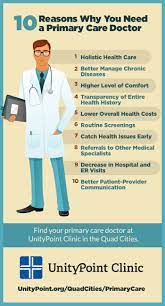Primary care physician 2022 Best

Mr. B Mr. B, a 70-year-old male client, presented to his primary care physician with complaints of blurred vision and headaches over the last two months.
Primary care physician
NCOA module 6 reply to Benny Consider the scenario below, then follow the instructions underneath it to complete the discussion. If appropriate, support your position with credible resources/examples/evidence and provide APA references. Mr. B Mr. B, a 70-year-old male client, presented to his primary care physician with complaints of blurred vision and headaches over the last two months. On several visits, Mr. B’s blood pressure was found to be elevated, so the physician started him on hydrochlorothiazide 25 mg by mouth daily. One month later, Mr. B began to have chest pains and shortness of breath, so his primary care provider referred Mr. B to a cardiologist for further evaluation.
Primary care physician
The cardiologist ordered an echocardiogram and stress test which revealed heart enlargement and a reduced ejection fraction (volume of blood pumped out of the heart per minute). As a result, the cardiologist started Mr. B on a beta-blocker (metoprolol 25 mg by mouth daily). A few days after taking the new medication (in addition to the hydrochlorothiazide ordered by the primary physician), Mr. B suffered a fall at home. Upon arrival at the emergency room, Mr. B’s blood pressure was 80/50. The emergency room physician suspected the cause of Mr. B’s fall was hypotension secondary to the medications he was taking.
Primary care physician
The ER physician recommended that Mr. B follow up with his primary care physician and cardiologist, but hold the medication until seen by them. As recommended, Mr. B visits his primary care physician for a follow-up. During the visit, Mr. B’s blood pressure is found to be elevated (160/90), so his physician tells Mr. B to restart taking his blood pressure medication. Imagine that you are the nurse attending to Mr. B and that he indicates that he’s afraid to restart the medication because of his recent fall. What considerations/actions should the nurse make regarding the client’s refusal to restart his blood pressure medication?
Primary care physician
What considerations/actions would have helped the healthcare team to prevent the client’s fall? Review the posts made by your classmates and reply to someone expanding on their idea or offering an alternative for consideration. Please make your initial post by midweek, and respond to at least one other student’s post by the end of the week. Please check the Course Calendar for specific due dates. Reply to the post below : As a nurse attending to Mr. B, after he admits that he was afraid of restarting the medication due to his recent fall, it is essential to take this concern seriously and discuss it with him in a compassionate, supportive manner. https://youtu.be/6ACBN5B6LzY
Primary care physician
It may be helpful to explore the factors that led up to the fall, such as any recent changes in his medication regimen or lifestyle that could have contributed to his declining health and subsequent fall. Additionally, Mr. B must remain closely monitored for any changes in his blood pressure or symptoms that could indicate a potential complication from the fall, such as injury to the head or increased risk of falling (Montero-Odasso et al., 2012).
Another action that I should take as a nurse during this situation is to work closely with Mr. B’s healthcare team and coordinate efforts to prevent any further health complications, such as ensuring that he follows his treatment plan and adheres to all instructions given by his physician.
Primary care physician
Overall, it is essential to empower Mr. B through open communication and collaboration to best support him during this time of complicated health and recovery. To help prevent future falls, it is also essential for healthcare providers to work closely with Mr. B and his family to identify any possible risk factors that may have contributed to the fall, such as poor balance or vision, and develop a targeted intervention plan to address these issues.
This could involve interventions such as providing Mr. B with additional support at home, encouraging him to maintain an active lifestyle with regular exercise, and working with his family on strategies to keep him safe in the home environment (Horne et al., 2010).
Additional Files







